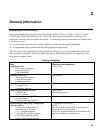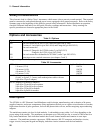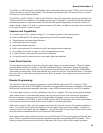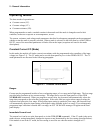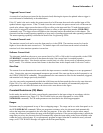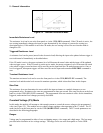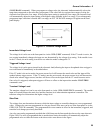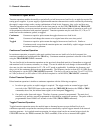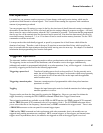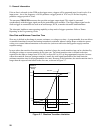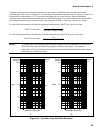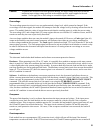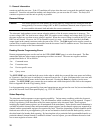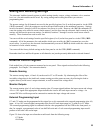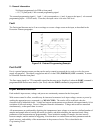
General Information - 2
27
List Operation
List mode lets you generate complex sequences of input changes with rapid, precise timing, which may be
synchronized with internal or external signals. This is useful when running test sequences with a minimum
amount of programming overhead.
You can program up to 50 settings (or steps) in the list, the time interval (dwell) that each setting is maintained,
the number of times that the list will be executed, and how the settings change in response to triggers. All listed
data is stored in a non-volatile memory when the *SAV command is executed. This means that the programmed
data for any list will be retained when the electronic load is turned off. Note that lists data can only be saved in
nonvolatile memory locations 0, 7, 8, or 9. List data will not be saved in other memory locations. Use the *RCL
command to recall the saved state.
List steps can be either individually triggered, or paced by a separate list of dwell times which define the
duration of each step. Therefore, each of the up to 50 steps has an associated dwell time, which specifies the
time (in seconds) that the input remains at that step before moving on to the next step. See chapter 5 for detailed
information about programming lists from the front panel.
Triggered Operation
The electronic load has various triggering modes to allow synchronization with other test equipment or events.
The triggering circuits are located in the mainframe, and all modules receive the trigger simultaneously
(although each module is programmed individually as to what operation, if any, will be triggered. As described
previously, triggering can be used for the following applications:
Triggering a preset level
Transfers all pending preset levels to the actual level. For the presently active
mode, the new level appears at the input. For the modes which are not presently
active, the preset levels will not take effect at the input until the applicable
mode becomes active.
Triggering a transient pulse
Generates a transient pulse of programmable width when pulsed transient
operation is in effect.
Toggling
Changes the input between the main level and the transient level when toggled
transient operation is in effect.
Triggers can be sent from the front panel by pressing the Trigger key. However you must first initiate the
trigger function by executing the TRIG:IMMED command located in the Trigger Control menu.
Three triggering methods are available over the GPIB: the GET function, the *TRG common SCPI command,
and the TRIG subsystem SCPI command (refer to Programming Guide). The SCPI TRIG subsystem allows
you to select either the ac line frequency, internal timer, or TRIG command as the trigger source. There is also
a TRIGGER connector on the rear panel for external trigger inputs.
*TRG and the TRIG command are both synchronous with other commands; that is, the modules are not
triggered until pending operations are completed. GET, external triggers, ac-line triggers, and internal-timer
triggers are all asynchronous; that is, the modules are triggered as soon as the trigger signal is received.



